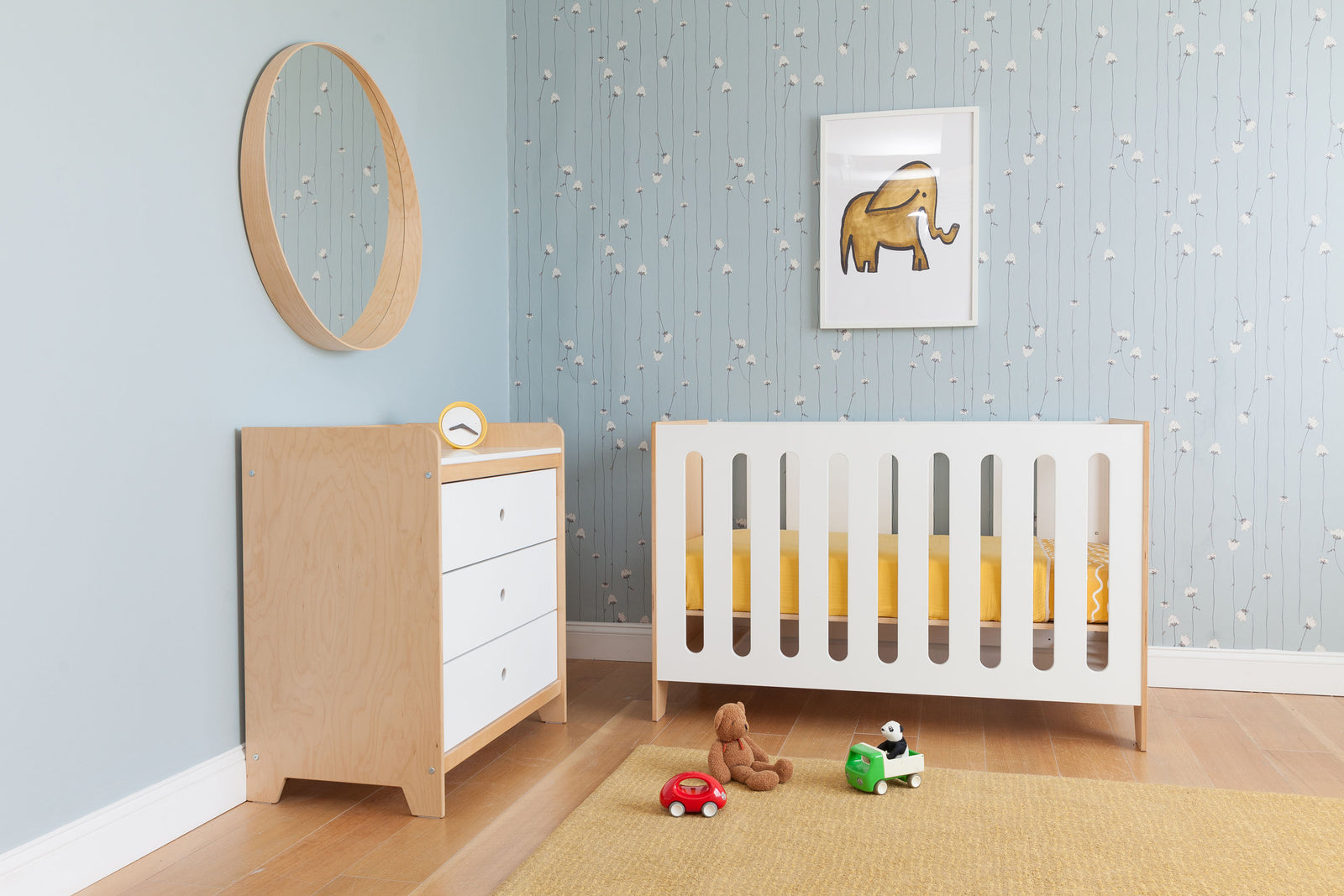Your Cart is Empty

A nursery, the baby's room, typically includes a crib, a changing table, and storage cabinets, but there are many options for types of furniture and the layout within the room. We’ll walk you through what you need (and what you don’t) and how to plan for the nursery to grow to every stage of your child’s life.
At Casa Kids, we’ve been making furniture for kids for three decades. We’re best known for our space-saving bunk beds and loft beds, but we’ve also helped many families welcome babies with custom crib solutions. Now for the first time, we’re offering a ready-made crib.In celebration, we’re sharing everything we’ve learned about how to design a nursery over the years—from space-planning advice to how to design a room that grows with your child.
While there’s a feeling of urgency to get your baby’s nursery ready before he or she arrives, the American Academy of Pediatrics recommends that infants should sleep in the same room as their parents for at least the first six months. This means you’ve got a little time to figure out your ideal set-up. In the early months, you can place the crib in a corner of your bedroom; later you can move it to the nursery.
While some retailers will offer you a baby registry list of must-haves that’s a mile long, we believe that a nursery can (and should!) be very simple. Here are the four key items for any nursery.
In addition to a crib and a place for clothing and diaper changes, you will likely have room for a few more items in the nursery; here are a few nice-to-have extras that take a room from purely functional to extra comfortable:
If your baby will be sharing a room with an older sibling, there are a lot of things to consider. If your older child is ready to make the transition from crib or toddler bed to a twin, do it before Baby arrives, so your older child doesn’t feel like the new sibling stole his or her crib! If your older child is staying in her existing sleep spot, look for a crib that will complement the existing bed. We designed our Cabina Crib with a two-tone finish, so that it would coordinate with a wider variety of furnishings. One solution we love for small spaces with a sibling over the age of six is toplace the crib under the loft bed, essentially creating a nursery within the larger room.
Today, most cribs, including our Cabina Crib, will convert to a toddler bed, but be sure to buy the conversion kit at the same time you purchase your crib, so you won’t risk it being out of stock when your toddler starts climbing out of her crib. Several companies sell what is referred to as a “two-in-one” crib mattress that is firmer on one side for safe sleeping in the infant stage and a bit more cushioned on the flip side for when you switch to the toddler bed stage. Many children can stay in a toddler bed until age 4 or 5. While it might be tempting to jump from toddler bed to a loft or bunk bed, kids need to be at least 6 before they can sleep in the top bunk.
Make sure your other furnishings can go the distance. For example, pair a changing pad with a high-quality dresser that can be used for years to come. Invest in storage furniture that you can imagine a teen using–not just a toddler. Whatever you buy, ask yourself, “Can I see my family using this for the next ten years?”
Just as important as what is in the room, is what’s not in the room. For safe sleeping, your child’s crib should be almost bare, save for a fitted sheet; there should be no bumpers, pillows, blankets, or stuffed animals in the crib. In addition to the usual safety regulations, Casa Kids uses safe, no-VOC finishes for all of our furnishings. We recommend investing in a high-quality crib mattress that is certified to have no VOC emissions, as well. In a nursery, it’s also critical to attach dressers and other storage furniture to the wall to prevent tip overs.